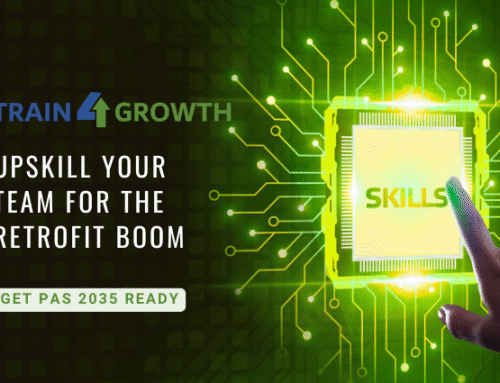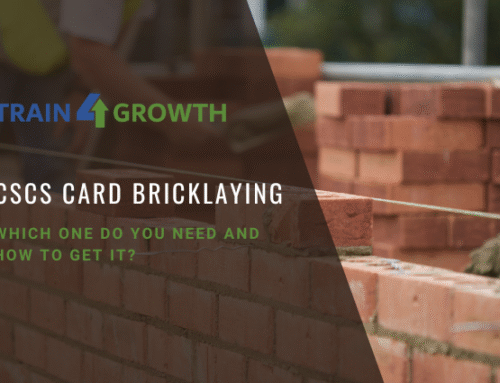As the UK shifts towards renewable energy, the demand for trained solar panel installers is growing fast. Whether you’re just starting out or already working in construction, the right training can set you on the path to a well-paid, future-proof career.
In this guide, we’ll break down exactly what’s involved in solar panel installation training, what you’ll learn, and how to qualify with a nationally recognised certification.
What Is Solar Panel Installation Training?
Solar panel installation training gives you the practical knowledge and skills needed to install photovoltaic (PV) systems safely and correctly. This includes everything from understanding solar technology and using tools at height to ensuring each system is installed to meet industry standards.
At Train 4 Growth, our Level 2 NVQ in Installation of Photovoltaic Panels is designed for real-world learning, giving you the qualifications you need to work on active construction sites across the UK.
What Will You Learn on a Solar PV Course?
This NVQ covers all the essential skills and safety knowledge required to work in solar energy installation. Here’s what’s included:
🔧 Understanding Solar PV Systems
You’ll get to grips with how photovoltaic panels work, including how they convert sunlight into energy, the components involved, and system layouts.
🦺 Health and Safety
Safety is a major part of the course. You’ll learn how to maintain a safe working environment, identify risks, and follow proper procedures—especially when working at heights or around asbestos-containing materials.
🪜 Working at Height
The course teaches you how to use ladders, scaffolding, and other access equipment safely—an essential part of installing panels on rooftops and structures.
👷 Communicating and Working with Others
Teamwork is crucial on construction sites. You’ll develop communication skills that help you work efficiently alongside other trades.
🔩 Fixing and Installing Panels
Learn how to position, test, and fix solar panels onto various structures. This includes both roof-mounted and non-roof installations.
📝 Final Checks and Customer Handover
You’ll also cover how to complete installations professionally and safely, including final testing and customer sign-off procedures.
How Do You Qualify?
To qualify, you’ll complete the Level 2 NVQ through workplace-based evidence. That means you don’t have to sit in a classroom full time—you’ll complete assessments while working on the job.
You’ll be assessed through:
- Portfolio evidence
- Practical tasks
- On-site observations
- Written assignments
This hands-on method means you can build your career while you learn, making it a flexible and cost-effective way to upskill.
Who Is This Solar Panel Installation Training For?
This course is ideal for:
- Labourers or roofers looking to move into renewables
- Electricians expanding their services to include solar
- Construction workers wanting a CSCS-recognised qualification
- Newcomers to the industry starting a green career
No previous qualifications are needed—you just need to be working in a relevant role or have access to real-world installation tasks.
If this doesn’t sound like the right fit, check out our full range of NVQ training courses to explore other options.
How Long Does the Course Take?
Most learners complete their training in 6 to 12 months, depending on their pace and how regularly they can gather evidence. It’s designed to fit around your work schedule, with online support or optional in-person sessions.
What Do You Get at the End?
When you complete the training, you’ll receive a nationally recognised Level 2 NVQ Diploma in Installation of Photovoltaic Panels. This qualification makes you eligible for the Blue CSCS Skilled Worker Card, which is required to work on most construction sites.
It also opens the door to:
- Higher NVQs or supervisory roles
- Long-term careers in renewable energy
- Opportunities to work on green building projects across the UK
Ready to Get Started with Your Training?
If you’re serious about a future in solar, now’s the time to act. The industry is growing, and skilled workers are in short supply.




